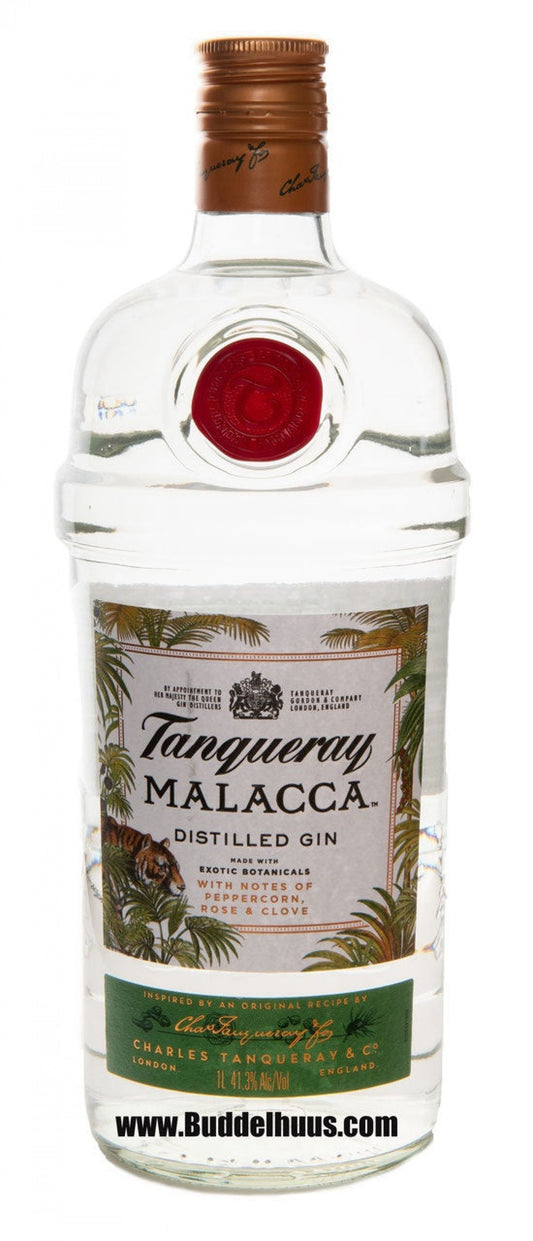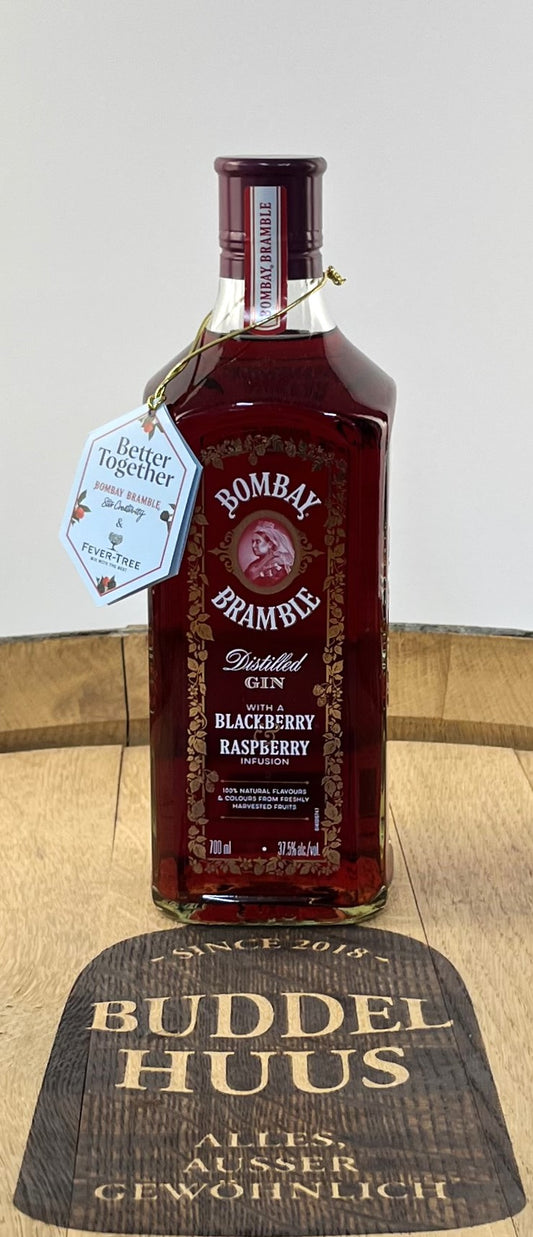-
Tanqueray Malacca Gin
Regular price CHF 65.00Regular priceUnit price per
-
Bombay Star of Bombay
Regular price CHF 35.00Regular priceUnit price per
The invention of gin, like many others, owes its origins to an idea that originally had a completely different purpose. The fascinating history of gin begins in a laboratory in the Dutch city of Leiden.
In the mid-17th century, the German physician Franciscus Sylvius, practicing in Holland, attempted to develop a medicine for stomach ailments, kidney stones, and colic. For this, he distilled juniper berries. The spicy juniper schnapps, which could indeed be attributed with a limited healing or calming effect, soon became a popular beverage among the population, evolving into a "trendy drink." Patients treated with it found the flavored distillate so enjoyable that the doctor faced a constantly increasing demand for this "medicine." Genever (or Jenever, Dutch for juniper, derived from the botanical name Juniperus) became a sought-after spirit, prompting Sylvius to soon enlist professional distilleries to assist in production for the non-pharmaceutical market.
The bustling Dutch sailors ensured that Genever became known beyond the Dutch borders. English soldiers, fighting alongside the Dutch in the Dutch-Spanish War (1568-1648), brought the juniper brandy to the British Isles, where it acquired the name Gin (shortened from Genever). By the mid-17th century, about 5000 Dutch people lived in London, further spreading the popularity of the drink.
When William of Orange became co-regent in England in the late 17th century, tolerance towards Catholicism and Catholic-influenced countries came to an end. Under the reign of the new ruler, the import of French brandy was prohibited, and high taxes were imposed on German beer as well as French and Spanish wines. The domestically produced gin thus became the cheapest alcoholic beverage, affordable even for the poorest. Queen Anne, who took over the reins after William's death in 1702, allowed every Englishman to produce gin, leading to unrestricted alcohol production in almost every English household. It is recorded that in 1727, six million English people consumed 22,730,460 liters of gin per year.
However, this mass consumption became an undeniable problem, flooding the market with increasingly inferior spirits. In 1736, the government responded with the first so-called "Gin Act." Production without a license and the sale of household quantities were prohibited. The minimum purchase quantity was set at around nine liters, making gin affordable only for wealthy English citizens. In addition, distilleries had to pay an annual special fee of 50 pounds, which few could afford. The "Fifty Pounds Gin" is a brand still available today, recalling the special fee imposed on distilleries at that time.
Despite all regulations, the "Gin Act" did not have the desired effect. The measures largely proved ineffective, as the composition of gin was legally defined. Minor variations in the recipe allowed for circumventing the laws. It is estimated that in the mid-18th century, both adults and children consumed more than 0.5 liters of gin per day. Stricter rules followed: licenses became cheaper, but gin could no longer be sold to end customers, and government controls were expanded. These measures were successful in curbing widespread intoxication. Gin was no longer a cheap spirit but evolved into a strictly controlled premium distillate.
How is gin produced, what are "botanicals," and what types of gin are there?
Gin is distilled from grain or molasses. Its characteristic flavor comes from the addition of spices, primarily juniper and coriander. About 120 different ingredients, known as botanicals, are used in gin production, depending on the manufacturer. Berries, peels, seeds, herbs—the imagination of a gin distiller knows almost no bounds. A precise composition remains their closely guarded secret.
Aromatization occurs either during or after distillation. In one method, alcohol vapors pass over the spices, while in the other, the additives float in the raw alcohol and are distilled together with it. This process is known as maceration. If the spirit is bottled directly after maceration, it is called "Compound Gin." This is the cheapest variant, not highly regarded in the industry. If there is another distillation run after maceration, the so-called "Distilled Gin" is produced, with four classic types distinguished: the dry Dry Gin and the dry London Dry Gin, the sweeter variants Old Tom and Plymouth Gin, as well as the Dutch Genever and Sloe Gin. The latter two are not strictly considered classic gins. The Dutch Genever recipe differs fundamentally from that of gin, and Sloe Gin is a sloe berry liqueur.
The various types are characterized flavor-wise as follows:
- DRY GIN is dry and juniper-focused.
- NEW WESTERN DRY GIN is a modern interpretation of Dry Gin, with juniper taking a back seat to other flavors.
- LONDON DRY GIN is not an indication of origin but a recipe that is dry and strongly (juniper-focused) spiced.
- PLYMOUTH GIN denotes the origin. This gin is slightly sweetened.
- OLD TOM GIN is a lightly sweetened variant, particularly well-suited for mixing cocktails. According to tradition, the name originates from the "tomcat" statues installed on the walls of some pubs after the Gin Act in the 18th century. Passersby would place a penny in the cat's mouth, and the landlord would then pour a jug of gin into a pipe ending at the cat's feet, allowing the passersby to secretly consume gin.
- GENEVER is a sweet and aromatic gin, primarily distilled in the Netherlands.


